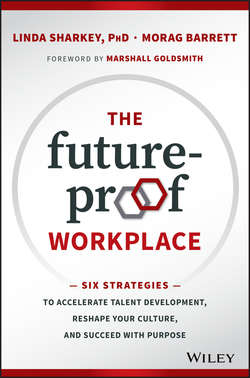Читать книгу The Future-Proof Workplace - Goldsmith Marshall - Страница 9
На сайте Литреса книга снята с продажи.
CHAPTER 1
SURVIVING AND THRIVING IN TURBULENCE
Digitization and Change
ОглавлениеLast night, while you were sleeping, white collar jobs were being replaced – by computer algorithms.
In the financial sector, software can analyze data, reveal trends, and pose probabilities faster than a human analyst can open a spreadsheet. We are able to mine data for predictions that we could never see previously. This analysis enables us to debunk myths and see new solutions to problems that we could not comprehend before.
These insights will change how we practice medicine, how insurance is sold, and how we transport ourselves to work – or stay home to work.
Today's 3D printers can create almost anything we can imagine. And our cars want to drive themselves! Robots and artificial intelligence are taking over tasks humans once did. In fact, one hotel in Japan is staffed by robots, with only a skeleton crew of humans.
But the new discoveries of the twenty-first century are only just beginning to be realized. A 2014 survey of executives by Forrester/Russell Reynolds cited that over 75 percent of those in the finance, health care, and government sectors believe that their business will be significantly disrupted in the next 12 months.
In the past few years we've seen Netflix go from darling to dumpster – twice! You can bet its executives, and every other media company, is looking to analytics to tailor content by region and by user in order to ride the wave of the future.
A “me too” strategy is not a strategy. If you're copying a business model, you're building in obsolescence and extinction.
Established corporations known as manufacturers, like General Electric, are working to reposition themselves as tech companies. GE is moving its headquarters to Boston, a decision we believe is intended to move the company closer to innovation hubs like MIT.
NV “Tiger” Tyagarajan, president and CEO at Genpact, LLC, recently shared with us that Genpact does not have corporate headquarters and instead spreads its teams around the world in hubs close to their customers. He also noted that their ability to use robots made communication with customers instantaneous.
Through the robot interface, the customer, sitting in New York, could meet the team – based in Poland – that would work for his organization and understand how its processes would be managed. It is quite revolutionary.
